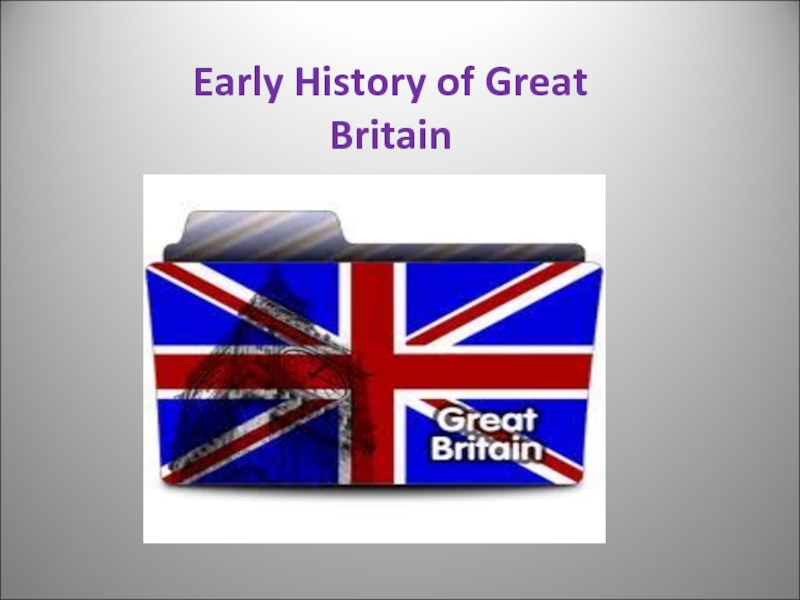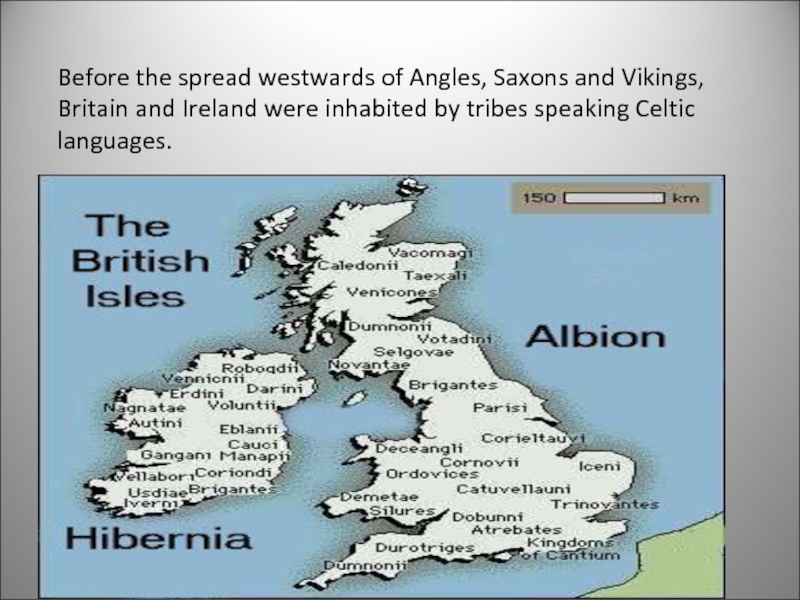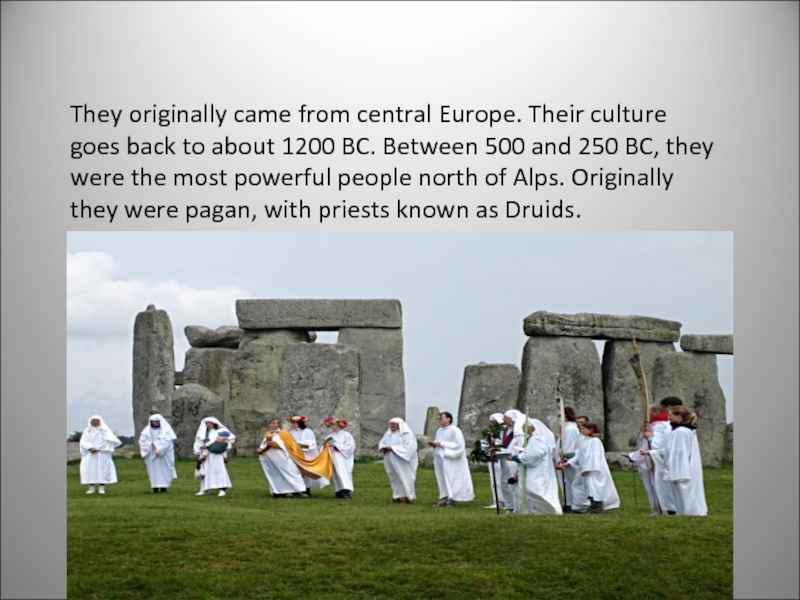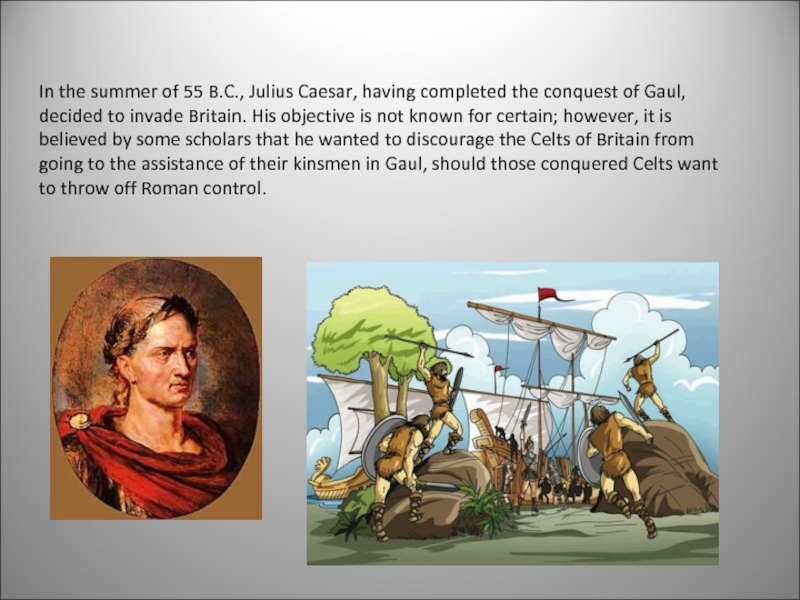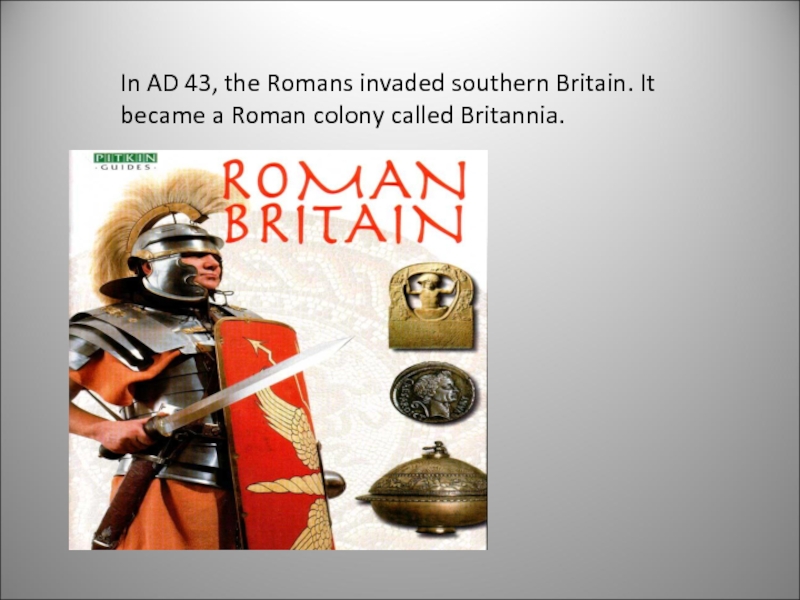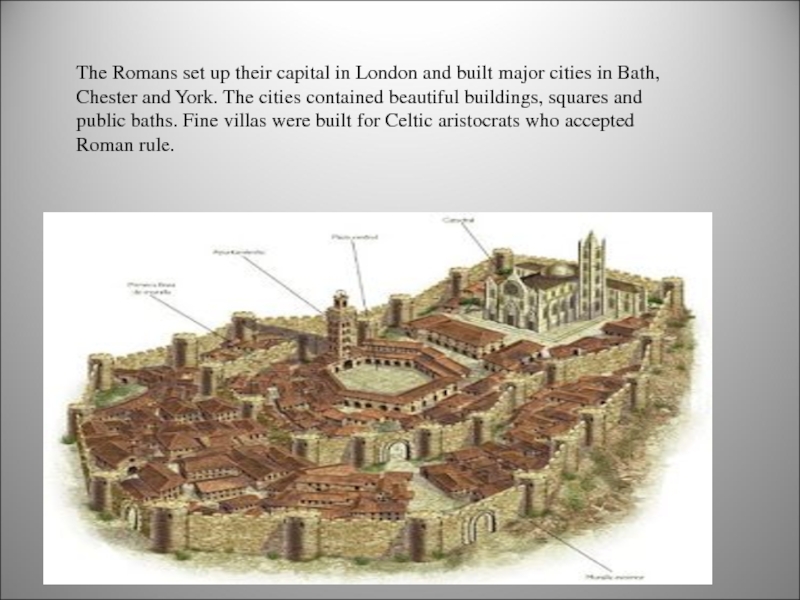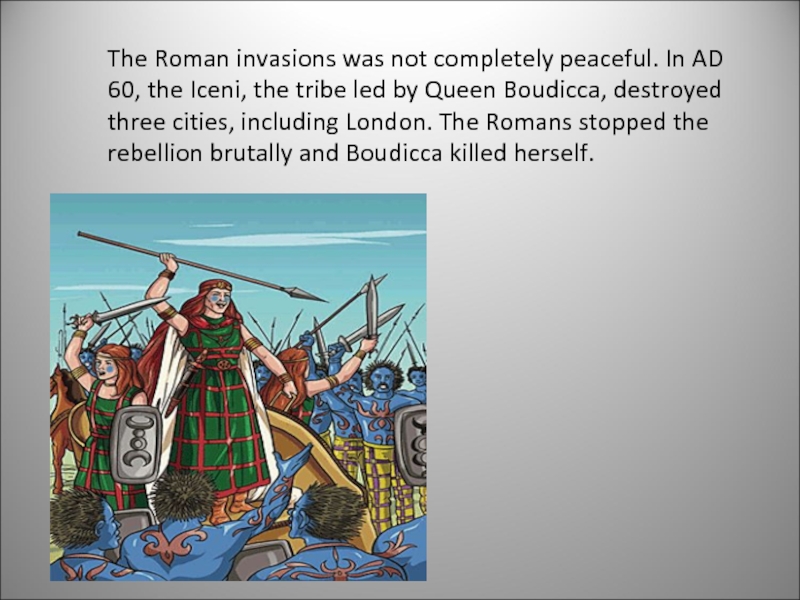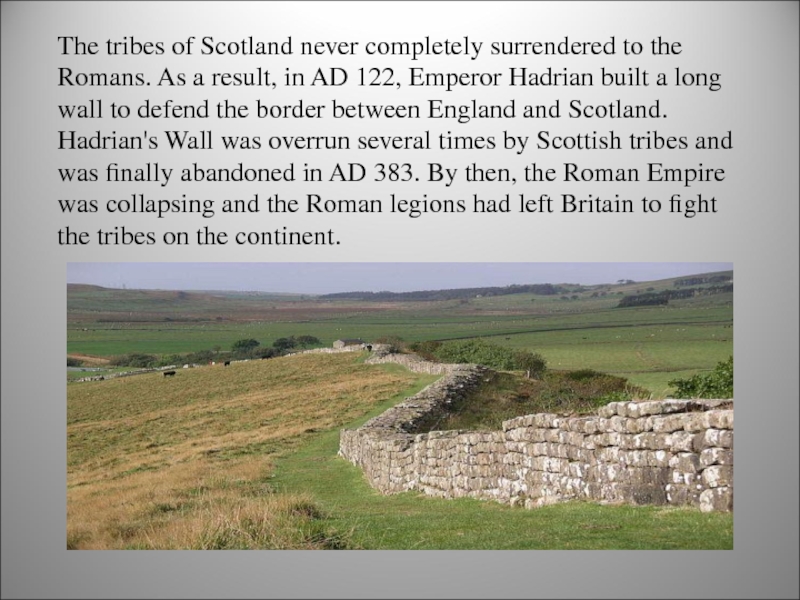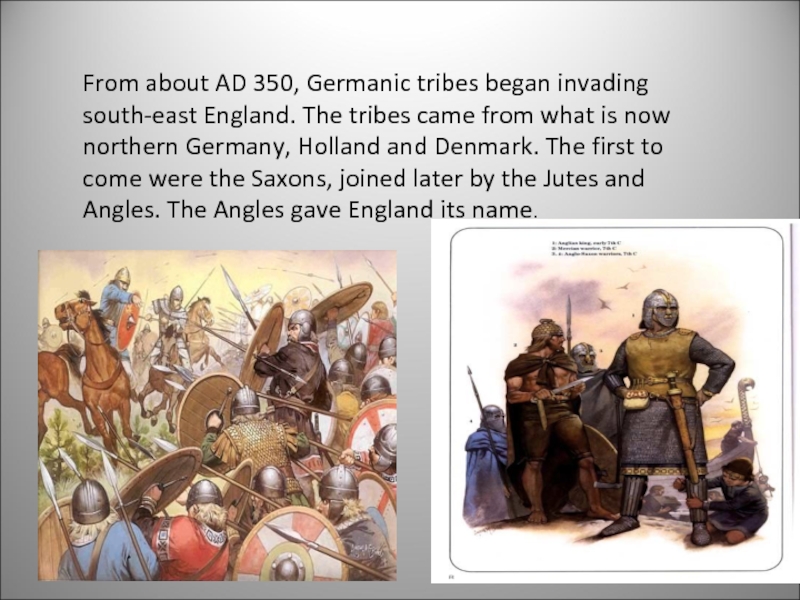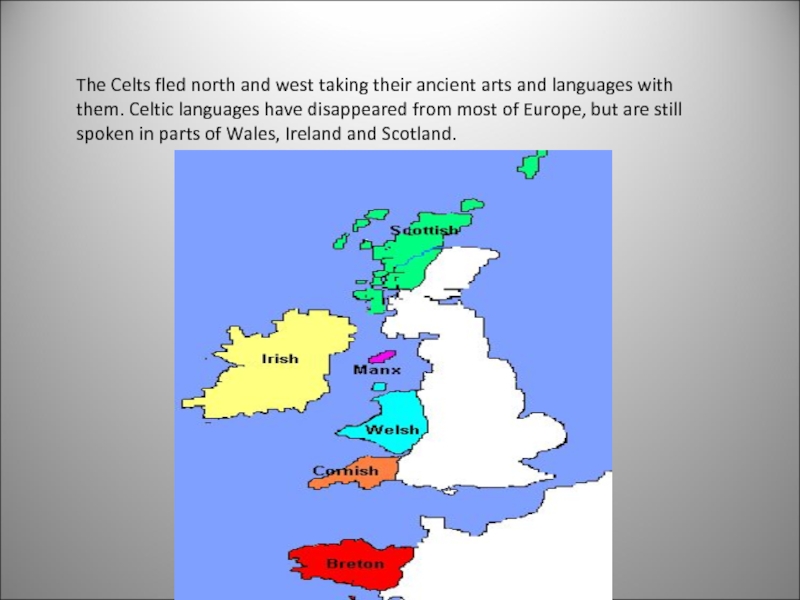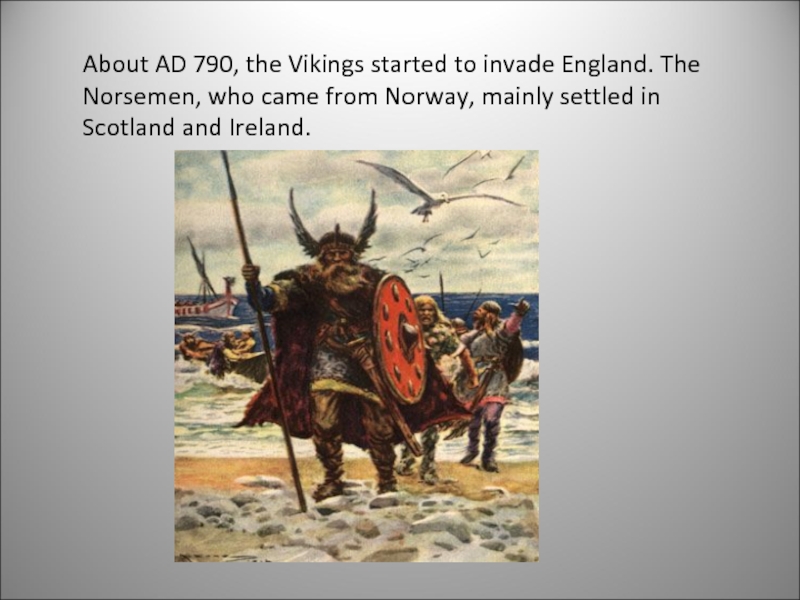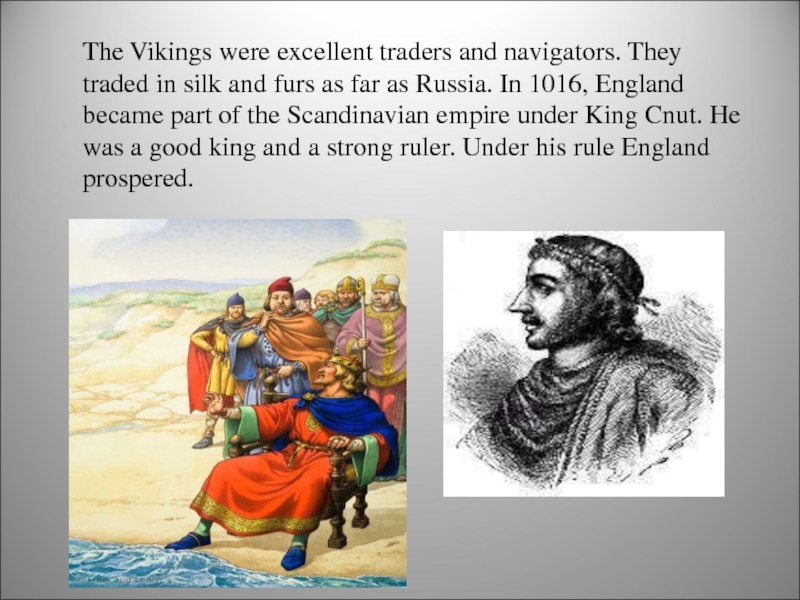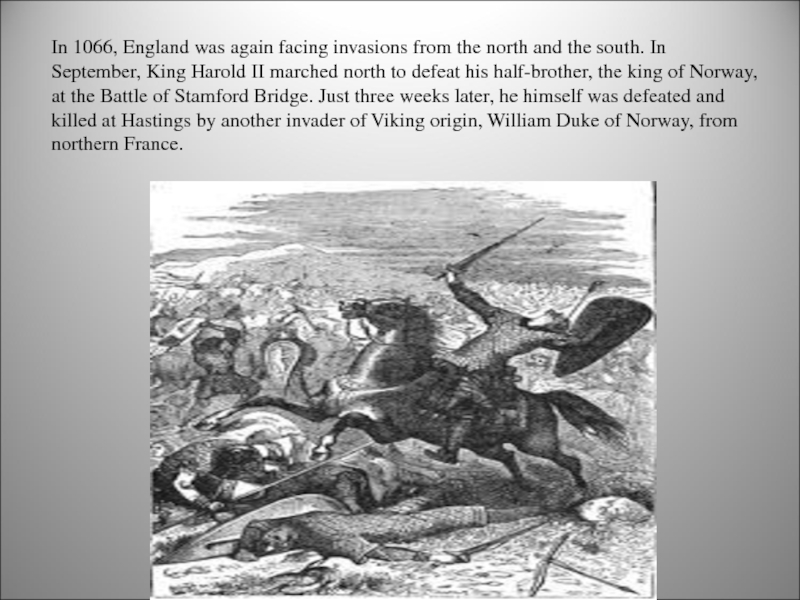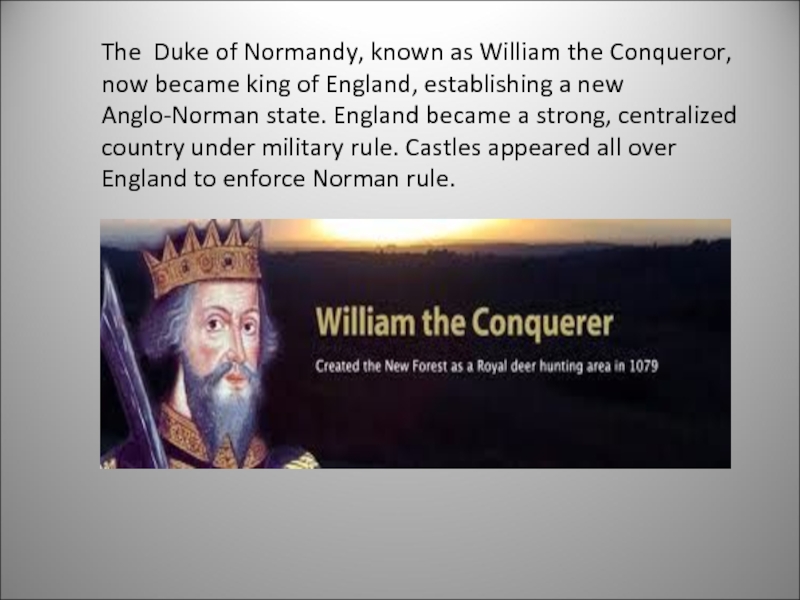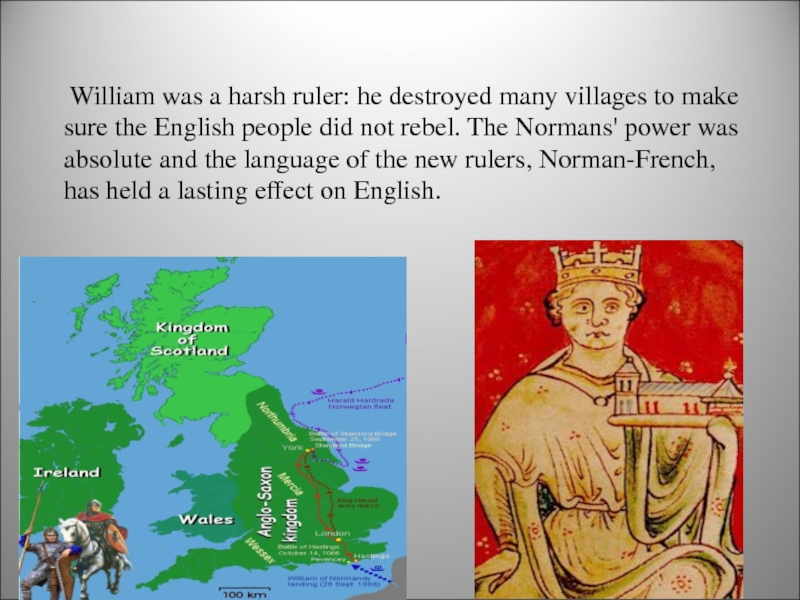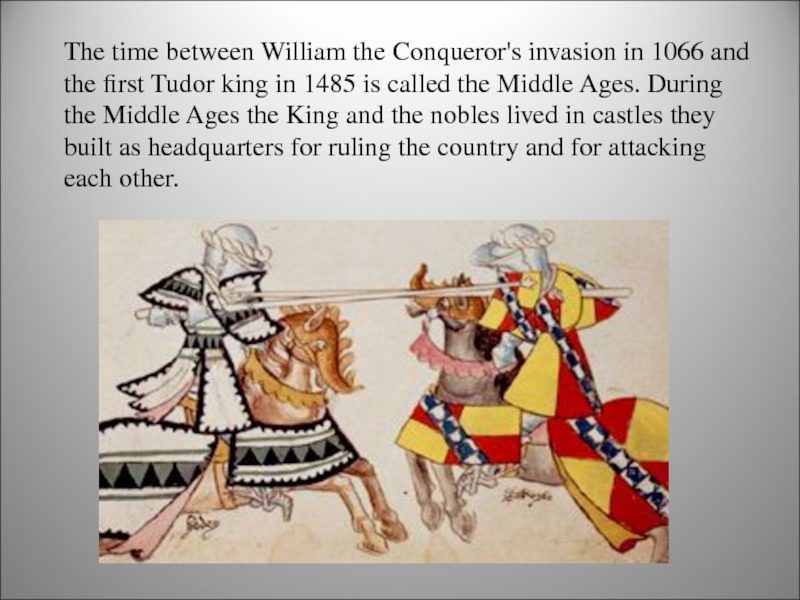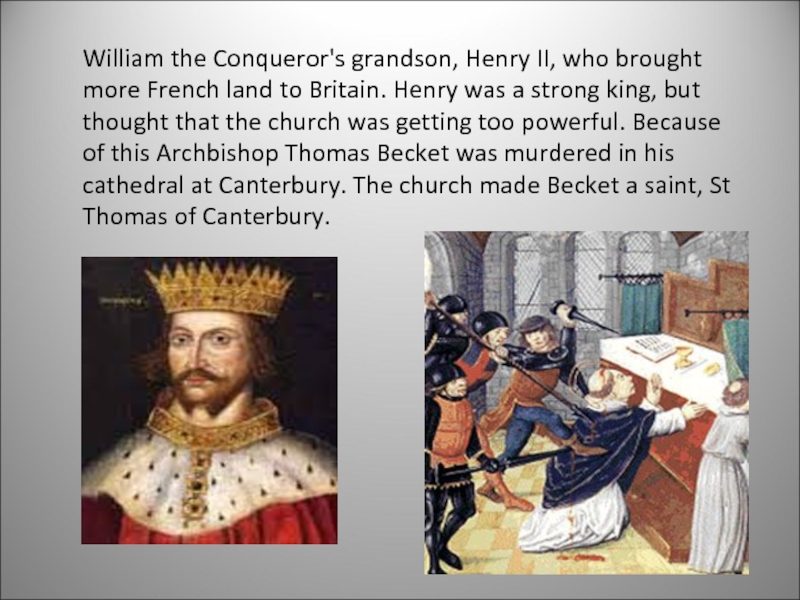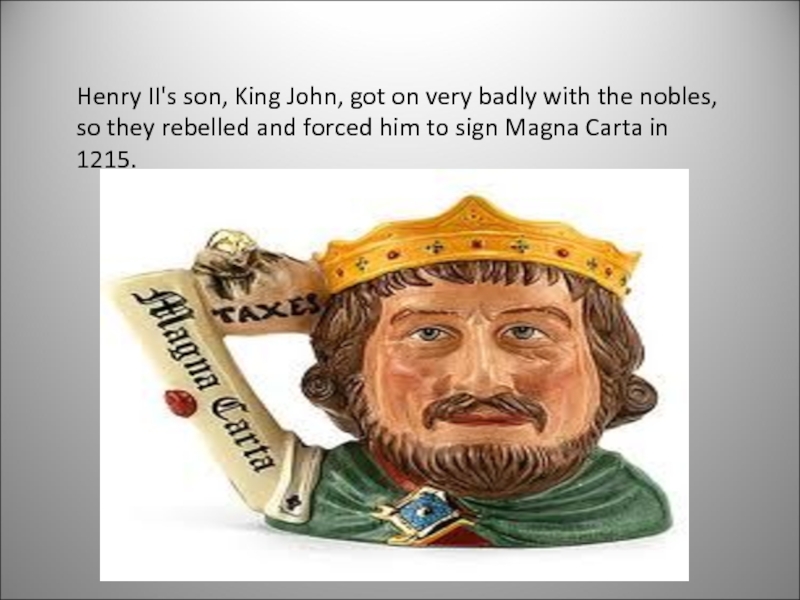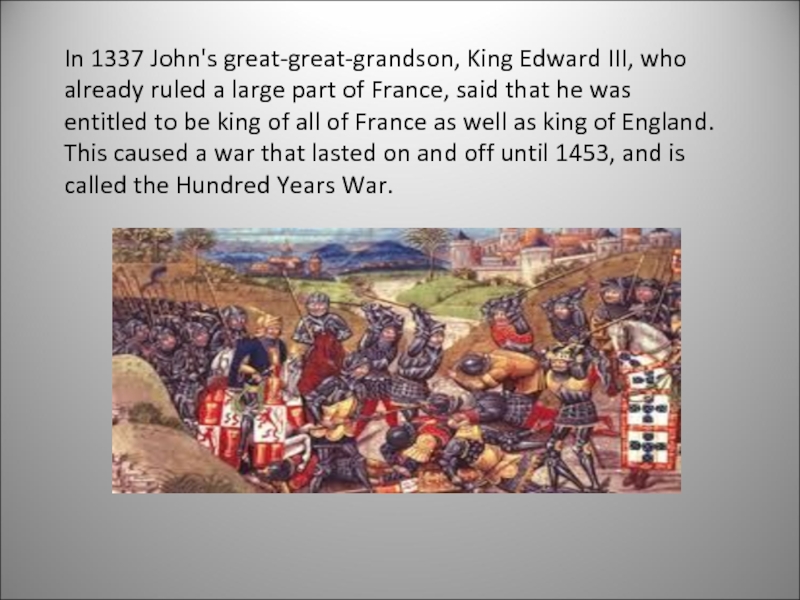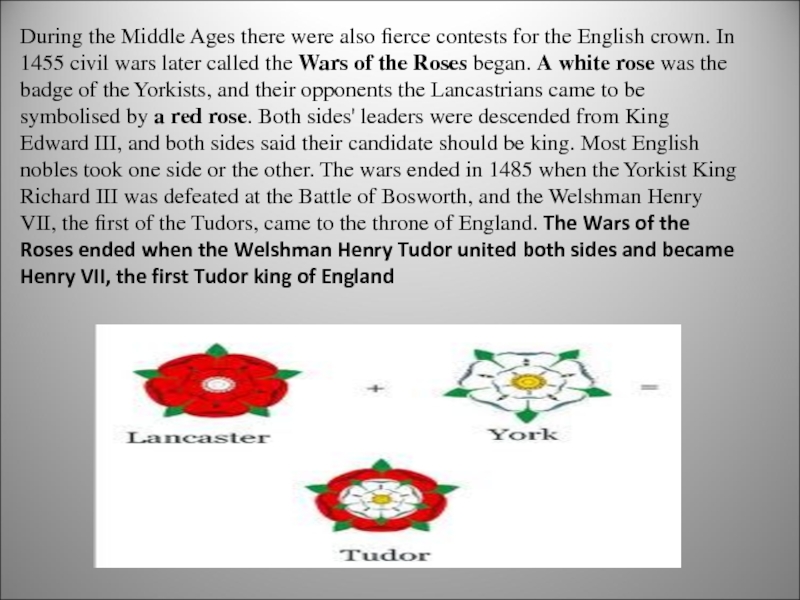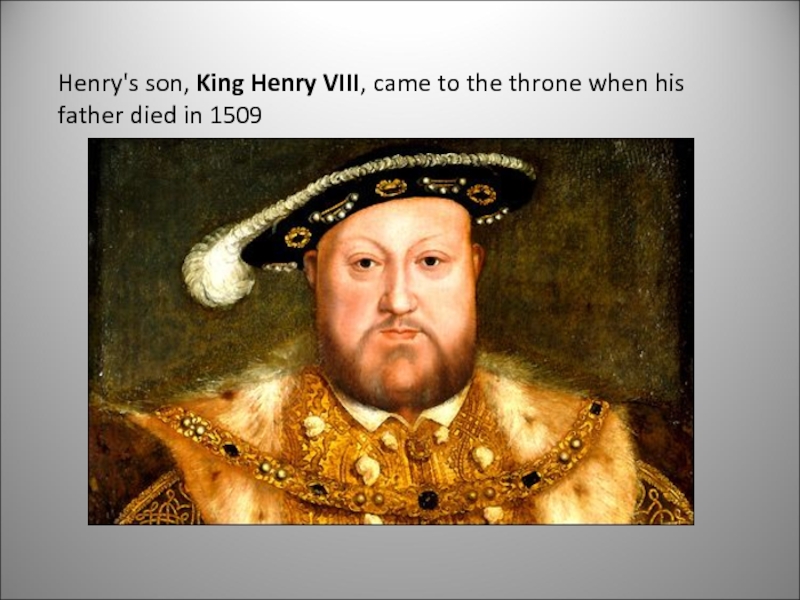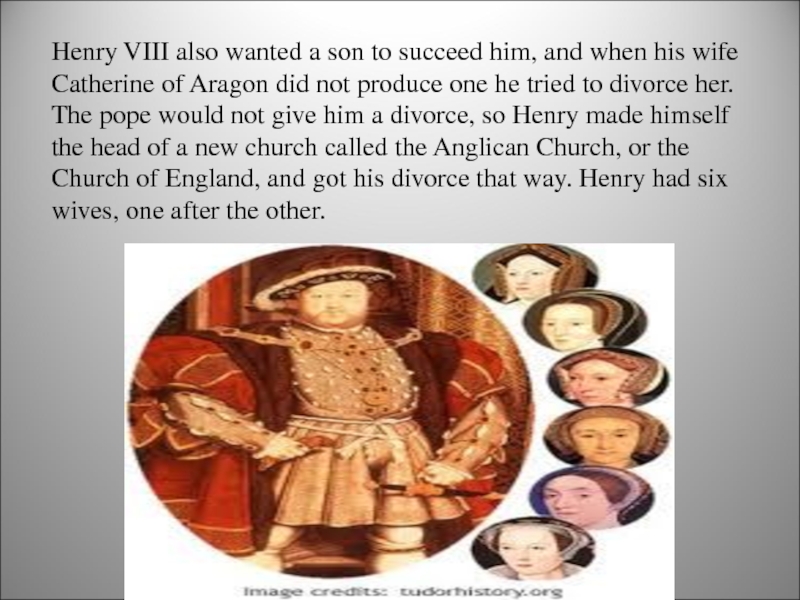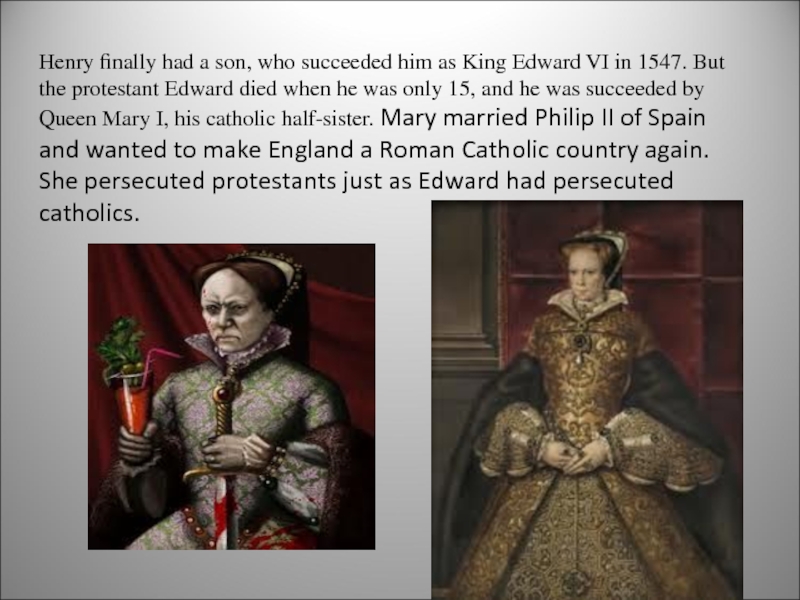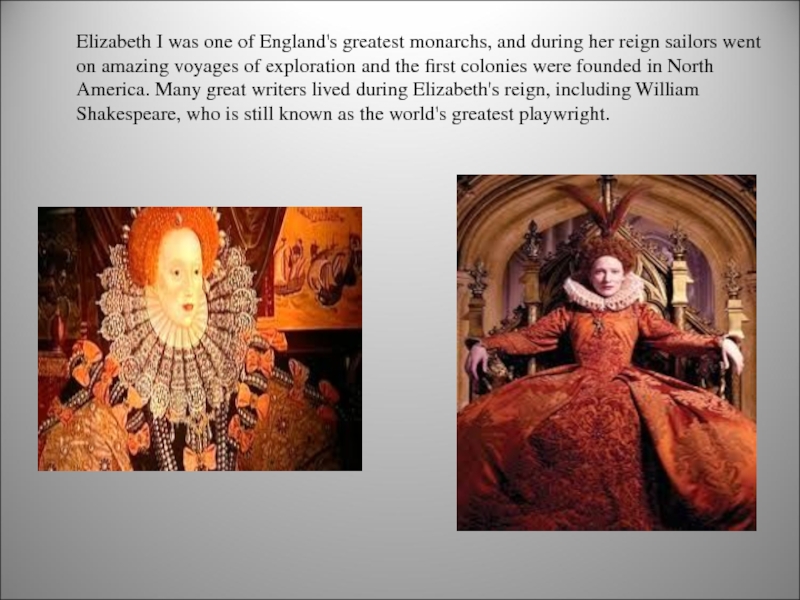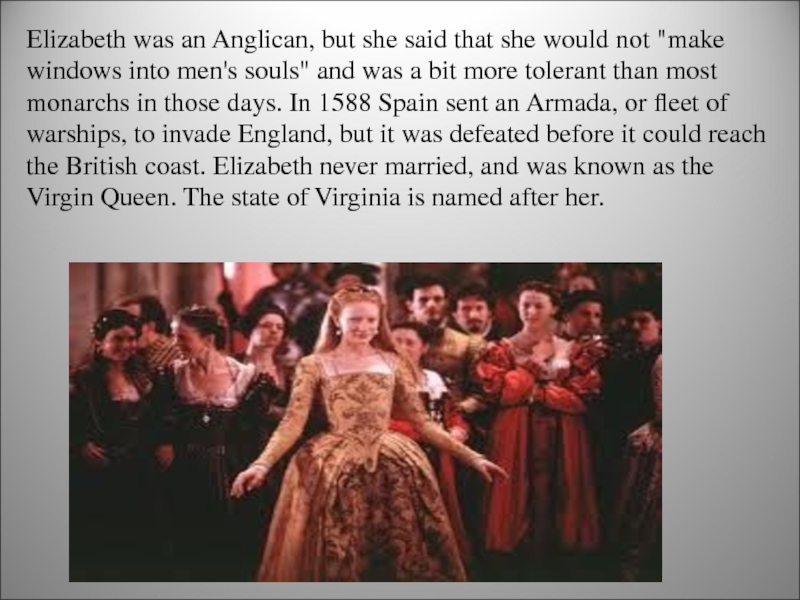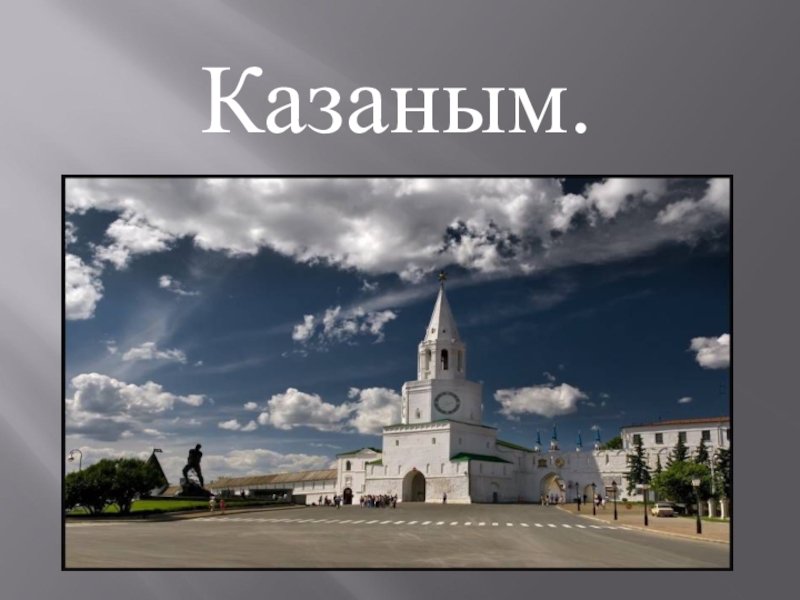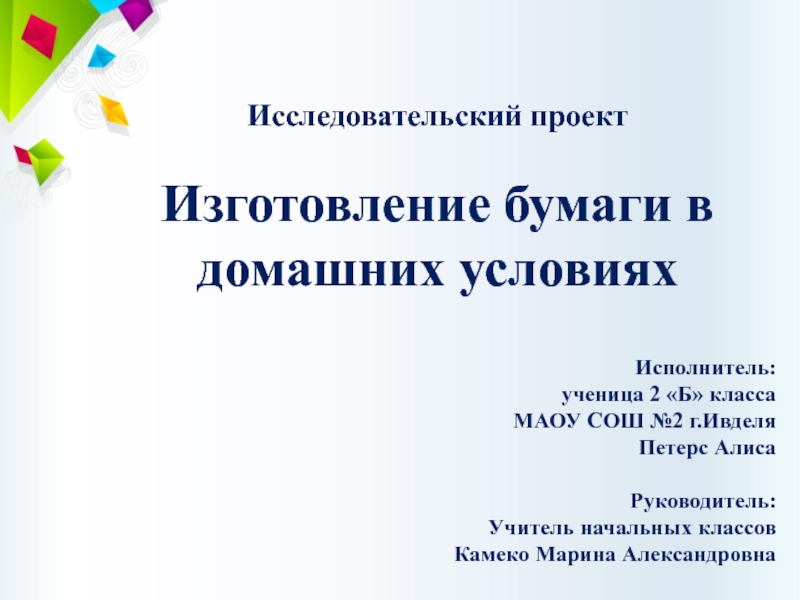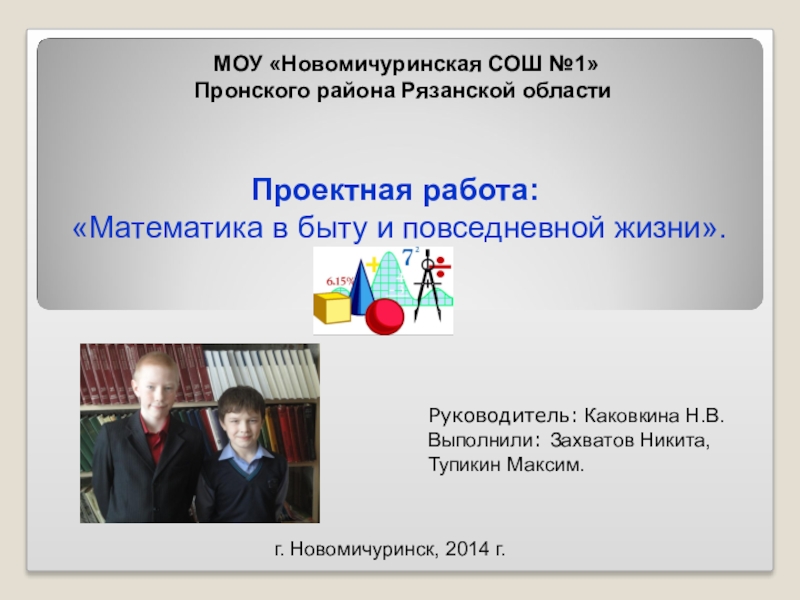- Главная
- Разное
- Образование
- Спорт
- Естествознание
- Природоведение
- Религиоведение
- Французский язык
- Черчение
- Английский язык
- Астрономия
- Алгебра
- Биология
- География
- Геометрия
- Детские презентации
- Информатика
- История
- Литература
- Математика
- Музыка
- МХК
- Немецкий язык
- ОБЖ
- Обществознание
- Окружающий мир
- Педагогика
- Русский язык
- Технология
- Физика
- Философия
- Химия
- Шаблоны, фоны, картинки для презентаций
- Экология
- Экономика
Презентация, доклад по лингвострановеденияю Велибритании Early History of Great Britain
Содержание
- 1. Презентация по лингвострановеденияю Велибритании Early History of Great Britain
- 2. Before the spread westwards of Angles, Saxons
- 3. They originally came from central Europe. Their
- 4. In the summer of 55 B.C., Julius
- 5. In AD 43, the Romans invaded southern Britain. It became a Roman colony called Britannia.
- 6. The Romans set up their capital in
- 7. The Roman invasions was not completely peaceful.
- 8. The tribes of Scotland never completely surrendered
- 9. From about AD 350, Germanic tribes began
- 10. The Celts fled north and west taking
- 11. About AD 790, the Vikings started to
- 12. The Vikings were excellent traders and navigators.
- 13. In 1066, England was again facing invasions
- 14. The Duke of Normandy, known as William
- 15. William was a harsh ruler: he
- 16. The time between William the Conqueror's invasion
- 17. William the Conqueror's grandson, Henry II, who
- 18. Henry II's son, King John, got on
- 19. Magna Carta is Latin for Great Charter.
- 20. In 1337 John's great-great-grandson, King Edward III,
- 21. During the Middle Ages there were also
- 22. Henry's son, King Henry VIII, came to the throne when his father died in 1509
- 23. Henry VIII also wanted a son to
- 24. Henry finally had a son, who succeeded
- 25. Elizabeth I was one of England's greatest
- 26. Elizabeth was an Anglican, but she said
- 27. Thank you for attention.
Before the spread westwards of Angles, Saxons and Vikings, Britain and Ireland were inhabited by tribes speaking Celtic languages.
Слайд 2Before the spread westwards of Angles, Saxons and Vikings, Britain and
Ireland were inhabited by tribes speaking Celtic languages.
Слайд 3
They originally came from central Europe. Their culture goes back to
about 1200 BC. Between 500 and 250 BC, they were the most powerful people north of Alps. Originally they were pagan, with priests known as Druids.
Слайд 4In the summer of 55 B.C., Julius Caesar, having completed the
conquest of Gaul, decided to invade Britain. His objective is not known for certain; however, it is believed by some scholars that he wanted to discourage the Celts of Britain from going to the assistance of their kinsmen in Gaul, should those conquered Celts want to throw off Roman control.
Слайд 6The Romans set up their capital in London and built major
cities in Bath, Chester and York. The cities contained beautiful buildings, squares and public baths. Fine villas were built for Celtic aristocrats who accepted Roman rule.
Слайд 7The Roman invasions was not completely peaceful. In AD 60, the
Iceni, the tribe led by Queen Boudicca, destroyed three cities, including London. The Romans stopped the rebellion brutally and Boudicca killed herself.
Слайд 8The tribes of Scotland never completely surrendered to the Romans. As
a result, in AD 122, Emperor Hadrian built a long wall to defend the border between England and Scotland. Hadrian's Wall was overrun several times by Scottish tribes and was finally abandoned in AD 383. By then, the Roman Empire was collapsing and the Roman legions had left Britain to fight the tribes on the continent.
Слайд 9From about AD 350, Germanic tribes began invading south-east England. The
tribes came from what is now northern Germany, Holland and Denmark. The first to come were the Saxons, joined later by the Jutes and Angles. The Angles gave England its name.
Слайд 10The Celts fled north and west taking their ancient arts and
languages with them. Celtic languages have disappeared from most of Europe, but are still spoken in parts of Wales, Ireland and Scotland.
Слайд 11About AD 790, the Vikings started to invade England. The Norsemen,
who came from Norway, mainly settled in Scotland and Ireland.
Слайд 12The Vikings were excellent traders and navigators. They traded in silk
and furs as far as Russia. In 1016, England became part of the Scandinavian empire under King Cnut. He was a good king and a strong ruler. Under his rule England prospered.
Слайд 13In 1066, England was again facing invasions from the north and
the south. In September, King Harold II marched north to defeat his half-brother, the king of Norway, at the Battle of Stamford Bridge. Just three weeks later, he himself was defeated and killed at Hastings by another invader of Viking origin, William Duke of Norway, from northern France.
Слайд 14The Duke of Normandy, known as William the Conqueror, now became
king of England, establishing a new Anglo-Norman state. England became a strong, centralized country under military rule. Castles appeared all over England to enforce Norman rule.
Слайд 15 William was a harsh ruler: he destroyed many villages to
make sure the English people did not rebel. The Normans' power was absolute and the language of the new rulers, Norman-French, has held a lasting effect on English.
Слайд 16The time between William the Conqueror's invasion in 1066 and the
first Tudor king in 1485 is called the Middle Ages. During the Middle Ages the King and the nobles lived in castles they built as headquarters for ruling the country and for attacking each other.
Слайд 17William the Conqueror's grandson, Henry II, who brought more French land
to Britain. Henry was a strong king, but thought that the church was getting too powerful. Because of this Archbishop Thomas Becket was murdered in his cathedral at Canterbury. The church made Becket a saint, St Thomas of Canterbury.
Слайд 18Henry II's son, King John, got on very badly with the
nobles, so they rebelled and forced him to sign Magna Carta in 1215.
Слайд 19Magna Carta is Latin for Great Charter. Magna Carta said that
even the king had to obey the law.
Слайд 20In 1337 John's great-great-grandson, King Edward III, who already ruled a
large part of France, said that he was entitled to be king of all of France as well as king of England. This caused a war that lasted on and off until 1453, and is called the Hundred Years War.
Слайд 21During the Middle Ages there were also fierce contests for the
English crown. In 1455 civil wars later called the Wars of the Roses began. A white rose was the badge of the Yorkists, and their opponents the Lancastrians came to be symbolised by a red rose. Both sides' leaders were descended from King Edward III, and both sides said their candidate should be king. Most English nobles took one side or the other. The wars ended in 1485 when the Yorkist King Richard III was defeated at the Battle of Bosworth, and the Welshman Henry VII, the first of the Tudors, came to the throne of England. The Wars of the Roses ended when the Welshman Henry Tudor united both sides and became Henry VII, the first Tudor king of England
Слайд 23Henry VIII also wanted a son to succeed him, and when
his wife Catherine of Aragon did not produce one he tried to divorce her. The pope would not give him a divorce, so Henry made himself the head of a new church called the Anglican Church, or the Church of England, and got his divorce that way. Henry had six wives, one after the other.
Слайд 24Henry finally had a son, who succeeded him as King Edward
VI in 1547. But the protestant Edward died when he was only 15, and he was succeeded by Queen Mary I, his catholic half-sister. Mary married Philip II of Spain and wanted to make England a Roman Catholic country again. She persecuted protestants just as Edward had persecuted catholics.
Слайд 25Elizabeth I was one of England's greatest monarchs, and during her
reign sailors went on amazing voyages of exploration and the first colonies were founded in North America. Many great writers lived during Elizabeth's reign, including William Shakespeare, who is still known as the world's greatest playwright.
Слайд 26Elizabeth was an Anglican, but she said that she would not
"make windows into men's souls" and was a bit more tolerant than most monarchs in those days. In 1588 Spain sent an Armada, or fleet of warships, to invade England, but it was defeated before it could reach the British coast. Elizabeth never married, and was known as the Virgin Queen. The state of Virginia is named after her.
